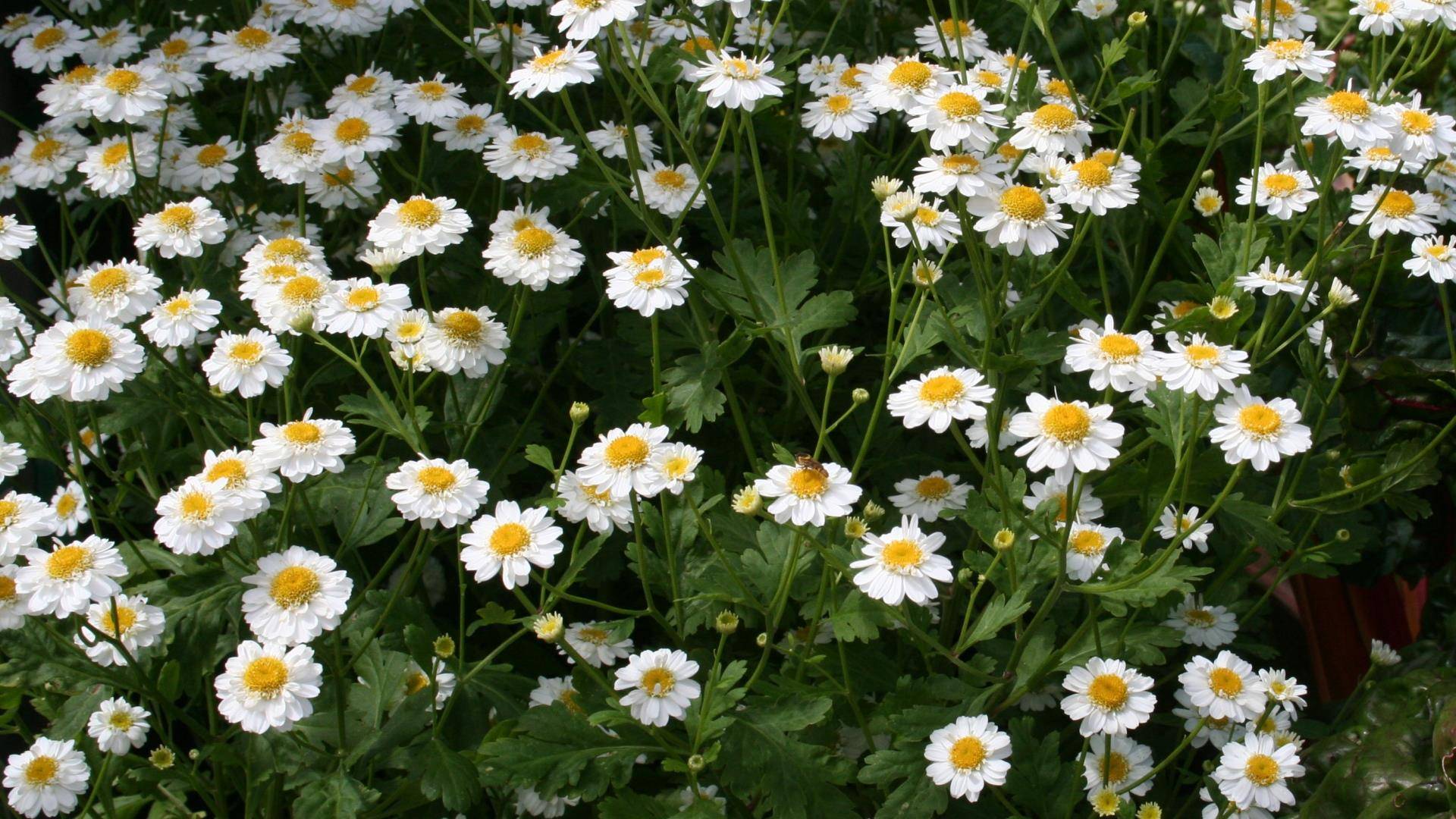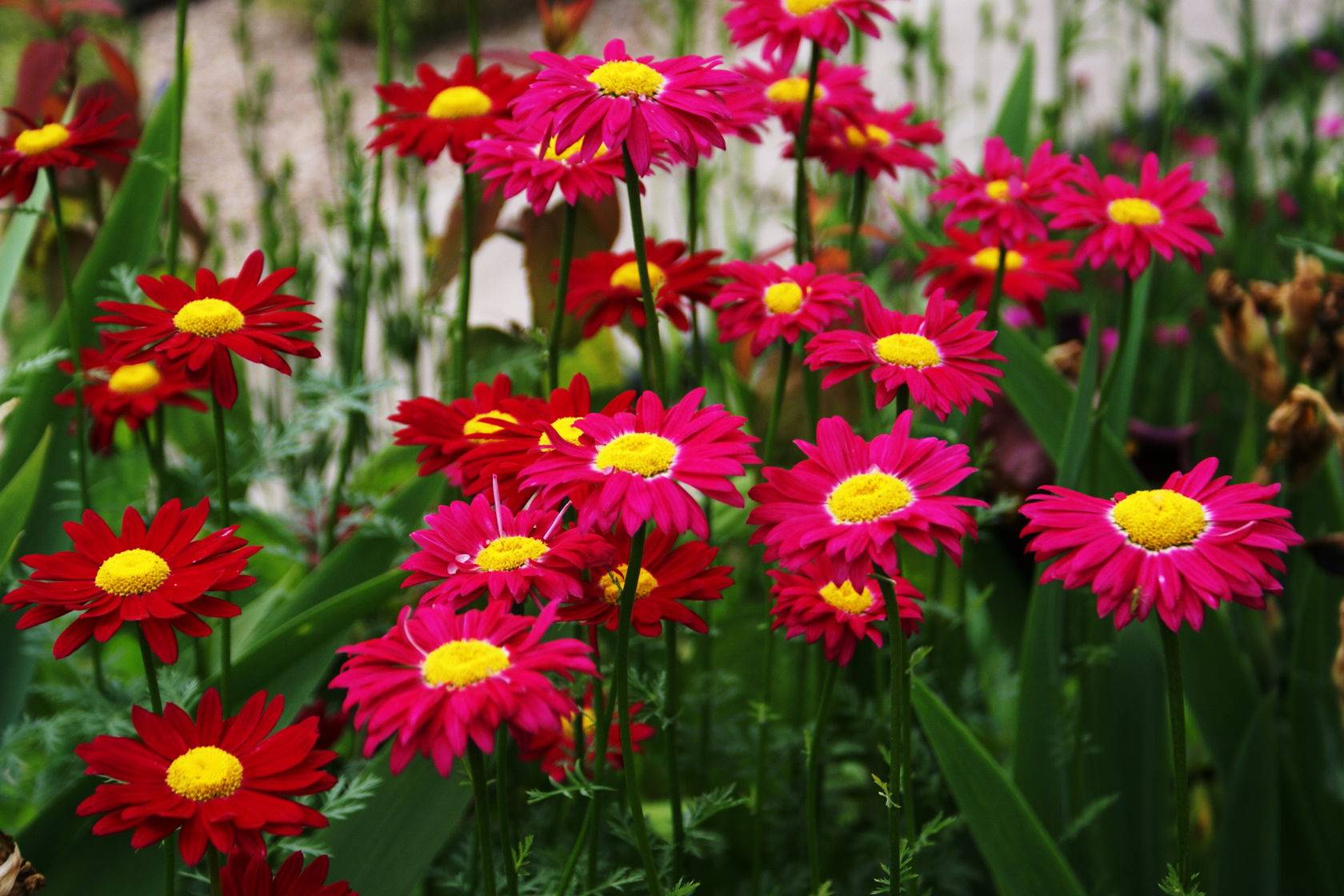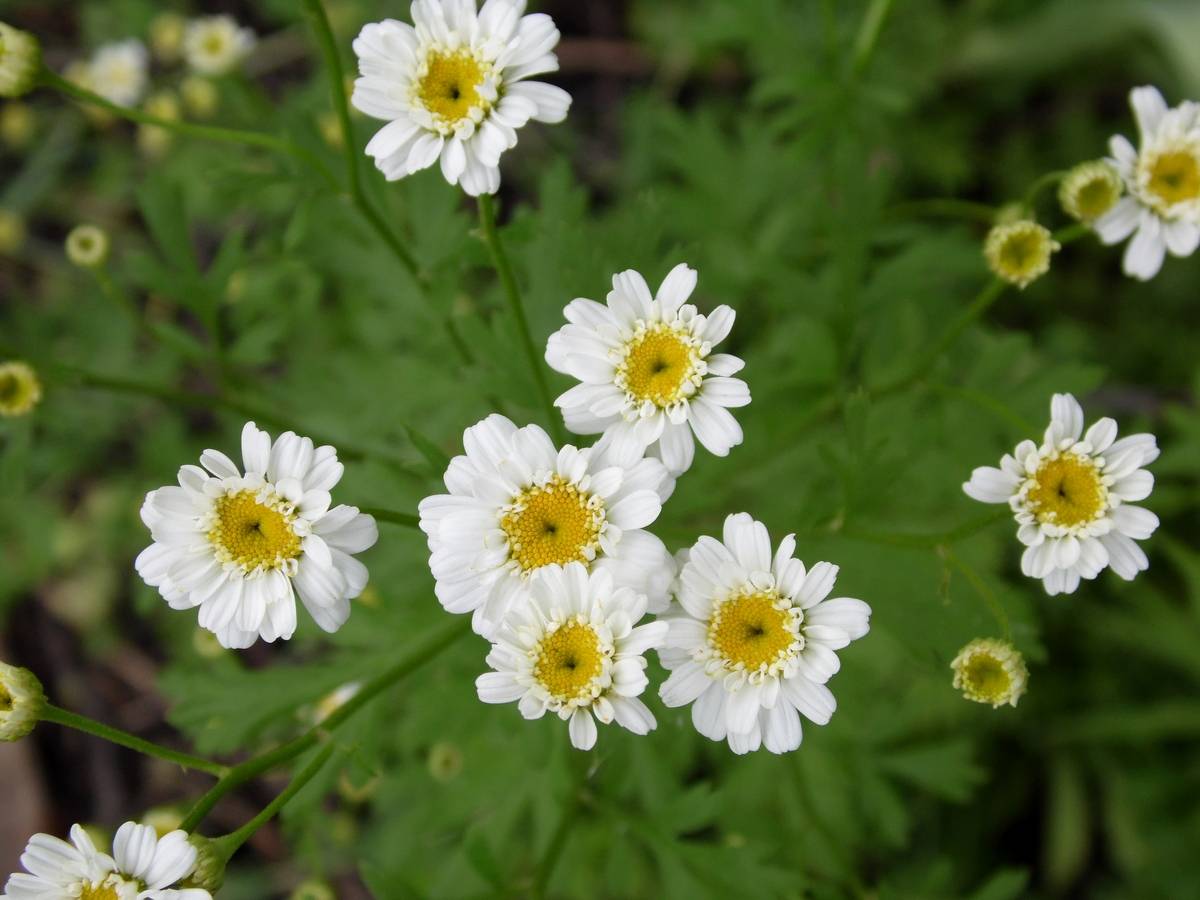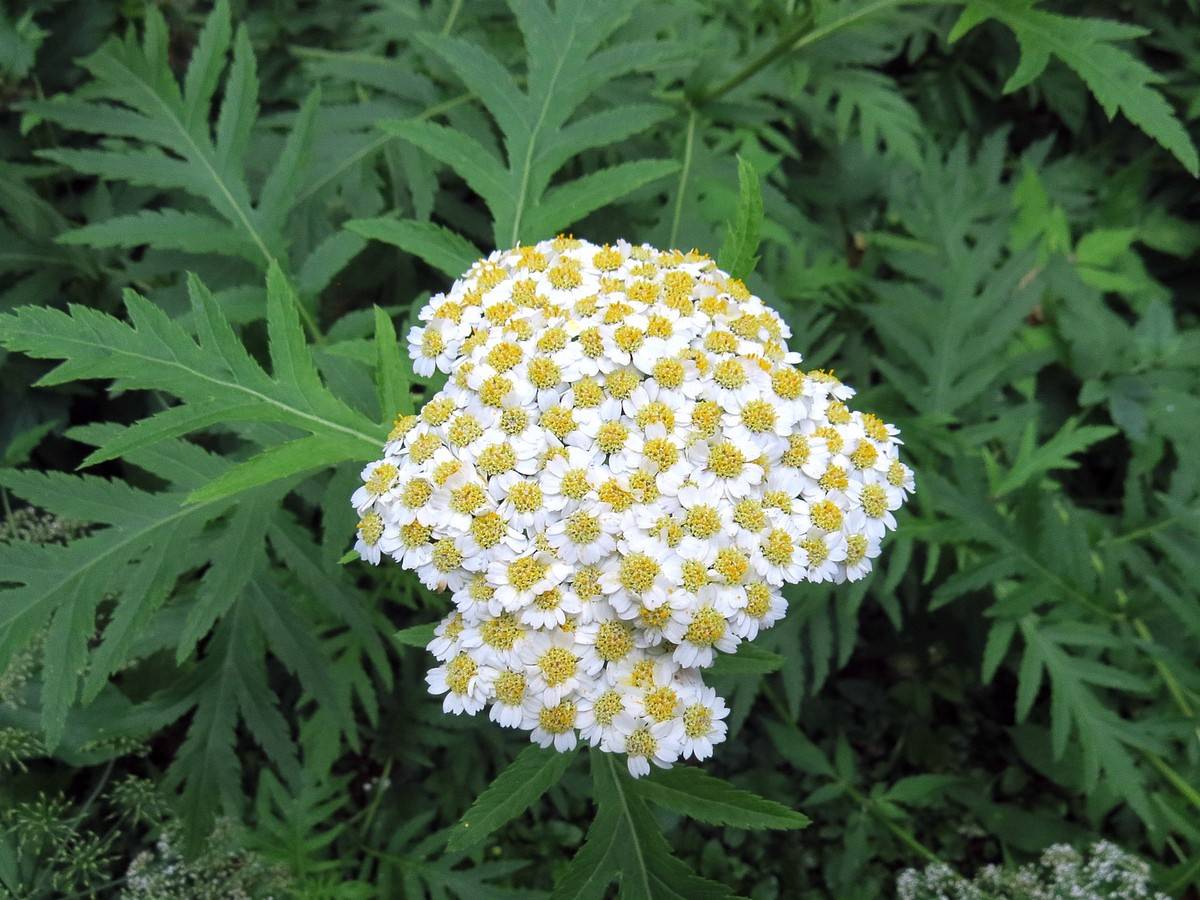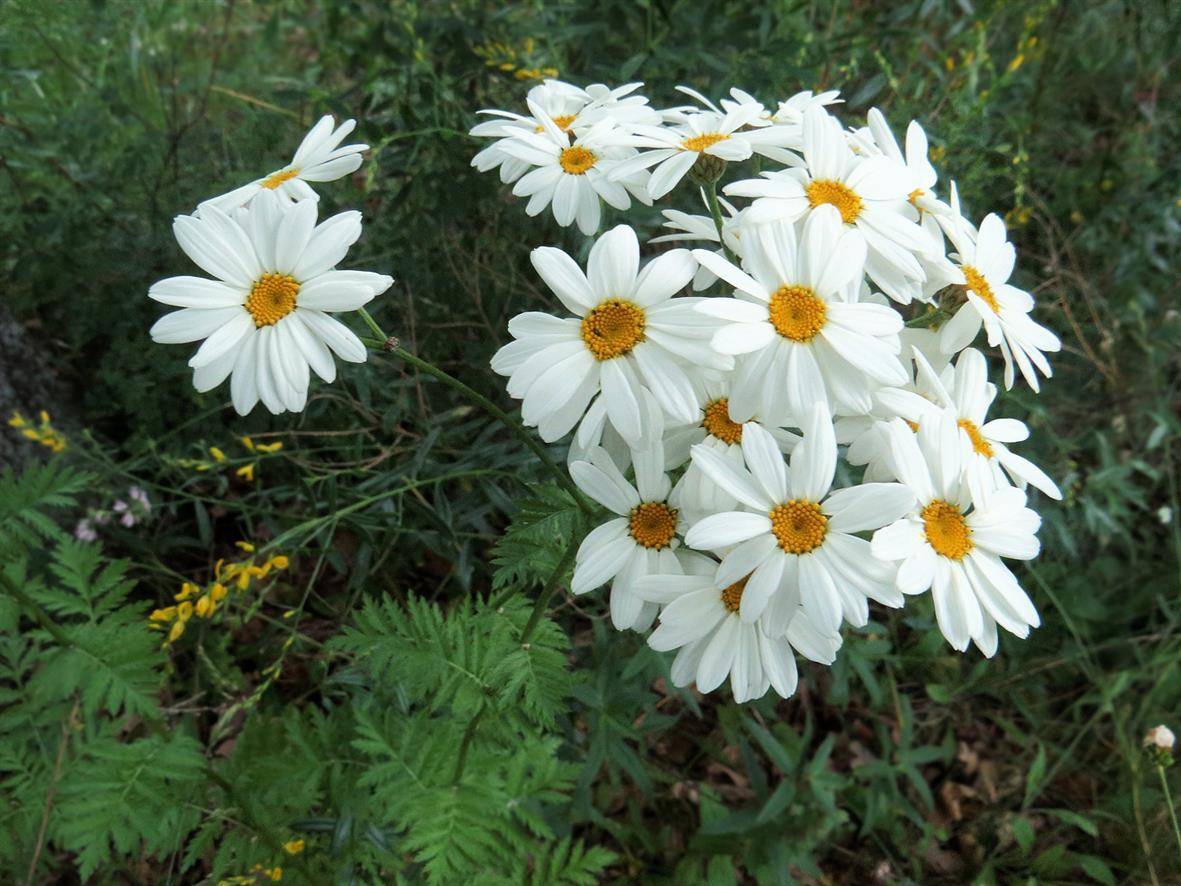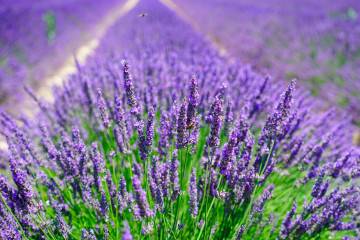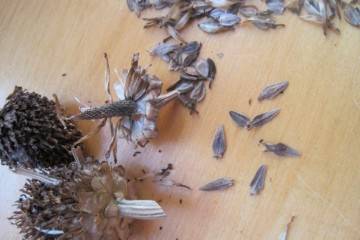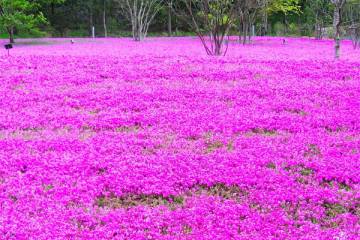Feverfew maiden - growing from seeds
Content:
Feverfew is a perennial flower, characterized by the presence of herbaceous shoots. It is a representative of the Compositae group. In the wild, they grow in Eurasia and North America. Visually, the plant has much in common with the common field chamomile, but the latter has a more voluminous core and rich color of the petals.
Feverfew maiden or Dalmatian chamomile (Persian chamomile): appearance and description
A perennial flowering plant combines the qualities of a common field chamomile and a sophisticated chrysanthemum. Thanks to the bright color of the inflorescences, the flower will become a real decoration of the personal plot and garden. The plant has strong immunity, so it practically does not get sick. It is unpretentious in leaving, even a novice gardener can grow it.
Blossoms of Persian chamomile Robinson with large white flowers. This type is considered the most common. Depending on the type and variety, the height of the bush can fluctuate between 15-60 cm.
Leaves are medium in size, have a pinnately dissected shape, rich green color. Visually, the inflorescences resemble baskets collected in the upper part of the bush.
Use in landscape design
An unpretentious plant resembling a Dalmatian chamomile is used by designers in landscape design to decorate lawns and flower beds. Attractive compositions can be created in combination with doronicum, dolphinum, poplar and bells.
Maiden feverfew varieties
Before you get acquainted with the features of planting and care of pyrethrum in the open field, you should study the existing types of ornamental plants. The most popular varieties among florists are:
- Goldbal. It is characterized by the formation of a large number of small double inflorescences that have a yellow-green color.
- Virgo is a variety that was bred by Turkish breeders. A characteristic feature of the species is the formation of terry inflorescences that visually resemble the shape of a ball, the petals are painted white. The height of an adult plant can reach 90 cm.
- Schneebal is a small plant, not spreading. It has a large amount of green mass, blooms luxuriantly with white double flowers.
- Zilbeoteppich is a variety that has a lot in common with Carlos pyrethrum. During flowering, snow-white inflorescences are formed.
Types of pyrethrum
There are many types of this spectacular and unpretentious plant. The following is a description of the most common ones.
Pyrethrum roseum
Pyrethrum pink is also known as Persian chamomile. It has branched shoots, the height of the bush rarely exceeds 70 cm. It has a large amount of green mass, leaves are light green in color.
During flowering, feverfew Robinson forms numerous inflorescences of a light pink color with a yellow heart. They are about 60 mm in diameter. It begins to bloom in the first weeks of summer.
Pyrethrum red (Pyrethrum coccineum)
A characteristic feature of the variety is the presence of double pinnately-crossed leaf plates, which are dark red in color. The aerial part of the culture contains substances poisonous for insects. They are completely safe for humans and animals. It begins to bloom in the first weeks of June.
Beautiful pyrethrum (Pyrethrum pulchrum)
Perennial flowering plant, the height of which does not exceed 50 cm. Erect shoots are dotted with winding hairs. A large amount of greenery cannot be noted. The foliage is radical, has long petioles. The length of each leaf can exceed 12 cm and the width is about 2 cm. Baskets are formed from tubular flowers of white and gray. In the common people, this variety is called Dalmatian chamomile.
Large-leaved pyrethrum (Pyrethrum macrophyllum)
This is a real giant that grows in the wild in the Caucasus. Plant height ranges from 1-1.5 meters. Inflorescences are corymbose, their diameter reaches 10 cm, and consist of a large number of small white flowers. Soon after flowering, the color of the petals of the Caucasian chamomile changes to red-brown or crimson.
Long flowering is an indisputable advantage of this species.
Feverfew (P. corymbosum)
This is a hybrid perennial plant, the height of the shoots of which ranges from 40-150 cm. The length of the basal foliage is 35-40 cm. Terry pyrethrum has much in common with the cinerarielous variety. Its ligulate flowers are white.
Feverfew: planting and care
Despite the fact that the flowering culture is perennial, many gardeners prefer to grow it as an annual. This is due to the fact that the decorative qualities of the plant are significantly deteriorating every year. The inflorescences on the bushes are formed less and less, they become even more miniature.
They start planting when the likelihood of frost has passed, and the soil has warmed up enough. In late May and early June, you can sow seeds directly into open soil. During sowing, the seeds are not buried, but only slightly sprinkled with soil. The flowerbed is additionally moistened, and covered with polyethylene fiber to create a greenhouse effect. It must be lifted periodically to ventilate the crops.
In order for the plant to start blooming earlier, you can pre-prepare the seedlings. Many people wonder when to plant feverfew when grown from seed. By sowing seeds in decorative pots in March, it will be possible to plant young plants in open ground in May.
Feverfew care
The plant does not need any special care. After planting, when the culture gets stronger and takes root, it will independently begin to fight the weed, therefore, weeding is recommended only at the very beginning of the growing season, until the bush has gained strength.
Also, mulching the periosteal circle will not be superfluous. This approach allows you to retain moisture in the soil, prevent the growth of weeds.
The main and prerequisite for the correct development of culture is abundant and regular watering, after which it is necessary to carefully loosen the soil of the near-stem circle.
Periodically, you need to apply organic and mineral fertilizers.With extreme caution, nitrogen-containing complexes should be used, because if you overdo it with their amount, the bushes will begin to grow green mass, not buds. The plant responds well to rotted manure.
Tall stems are often lowered, so it is recommended to tie them up. If, after the first flowering, cut off all the peduncles, not allowing the seed to ripen, then at the end of summer the plant will bloom again.
Feverfews grow in one place for 4 years, then it is recommended to transplant them to a new place. During transplantation, the bushes can be divided.
Diseases and pests, prevention
Feverfew has strong immunity and resists most aggressive environmental factors. But sometimes the bushes can be affected by diseases and attacked by insects.
The most common diseases are fusarium and gray rot. Both diseases are caused by fungi. The defeat begins with the root system, it simply begins to rot, which over time inevitably affects the state of the aboveground part of the bush. To prevent the development of diseases, seed and soil are treated before planting.
The most common insects are aphids, slugs and thrips. Slugs are large, so they can be identified immediately, removed from the bush and destroyed.
For the prevention of anomalies, it is recommended to irrigate the bushes with an insecticide solution with a certain frequency. These are special preparations that are sold in a large assortment in specialized stores.
Growing and caring for a plant is quite simple. The main thing is to familiarize yourself with the basic agrotechnical rules and maiden feverfew will delight the eyes of all households for a long time.
